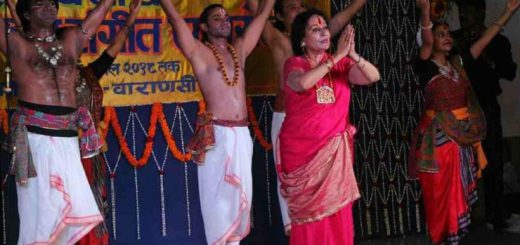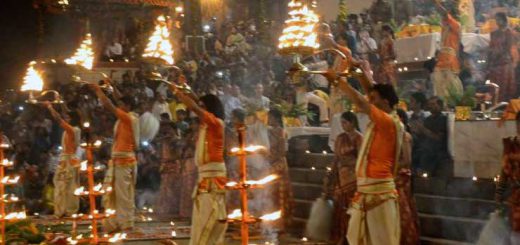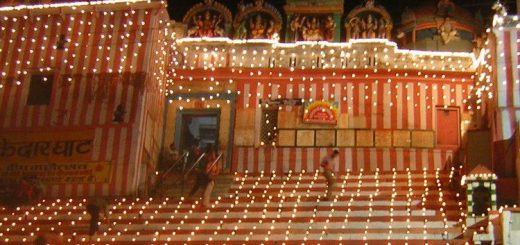Mahashivratri festival 2026 in Varanasi

Date & timing
According to a guide specific to Varanasi, Mahashivaratri in 2026 will be celebrated on Sunday, 15 February 2026. Because lunar-calendar festivals can vary and sources differ, it’s wise to check closer to the date with the local temple authority (Kashi Vishwanath Temple/Temple Trust) for the officially confirmed date and timings. The festival activities often begin before the main date (night-vigil) and carry into the next early morning.
Significance of the festival
Mahashivaratri literally means “Great Night of Shiva”. It is dedicated to Lord Shiva and traditionally commemorates his union with Goddess Parvati, his cosmic dance (Tandava), and the overcoming of ignorance/darkness. In Varanasi (also called Kashi), the city holds special significance since Shiva is believed to reside there, making the celebration especially charged. Rituals such as fasting, all-night vigils (jagarans), bathing in the Ganga, offering Bilva leaves to Shiva lingams, and spending the night in worship are common.

How Varanasi celebrates it — what to expect
a) Major venue: Kashi Vishwanath Temple
- The Kashi Vishwanath Temple (one of the twelve Jyotirlingas) becomes the focal point: special pujas, abhishek (ritual bathing of the lingam), night-long opening, huge queues of devotees.
- The temple administration often arranges live telecasts of the darshan (viewing) for people outside.
b) Processions: “Shiva Baraat” and other festivities
- One distinctive highlight in Varanasi is the Shiva Baraat — a festive procession symbolizing Shiva’s wedding party, with sadhus, musicians, devotees, street theatre.
- At night the ghats, streets around the temple area become lively with lights, chanting, crowds.
c) On the Ghats and riverfront
- The Ganga ghats (especially Dashashwamedh Ghat etc) fill with activity: ritual baths, chants, fireworks/lightings, spiritual ambience.
- The weather in February in Varanasi is usually favorable (cool but pleasant) which adds to the experience.

Practical tips for attending
- Accommodation & early arrival: Because of the high influx of devotees, book your stay well in advance if you plan to visit during Mahashivaratri in Varanasi.
- Be ready for large crowds: Many sources report hundreds of thousands of participants and intense crowding. For example: “Rush pretty much entire day, specially at temples … I was there last year … it was a sea of people … literally impossible to go inside”
- Best vantage points for processions: For seeing the Shiva Baraat procession, elevated spots or early arrival in the route-zone help. According to a guide: “Smart viewing requires elevated positions, early positioning, and strategic safety planning.”
- Dress & behaviour: Wear modest, comfortable clothing suitable for temple & ghats, comfortable shoes, be prepared for rituals, long waits, and busy spaces.
- Stay safe & hydrated: Since it’s a night‐long event, plan for food/water, know exit routes, avoid getting stuck in very dense crowds.
- Transport & logistics: Public transport and trains fill up; roads might be cordoned. Make sure you have return transit arranged.
- Spiritual mindset: If you’re going for spiritual experience, spend time at the ghats early morning, try to join a mangala-aarti (pre-dawn ritual) or jagaran.
Why February/Timing matters
- Being in February means cooler weather (vs peak summer) which is easier for all‐night vigils and outdoor processions. One guide mentions: “Nighttime Low: A cool 12 °C (54 °F) … the Ganga boat ride is safe and pleasant.”
- The lunar calendar dictates the exact date (Phalguna Krishna Paksha Chaturdashi) so aligning travel with the lunar‐festive date is important.
Recommended schedule for the day
- Early morning (pre-dawn): Jagaran (night vigil) in many temples; first abhishek early morning around 4-6 am.
- Morning to midday: Darshan at Kashi Vishwanath, ritual bathing at ghats.
- Afternoon to evening: Processions begin preparation, devotees gather.
- Evening (peak): Main Shiva Baraat procession 6-9 pm; heavy activity until midnight.
- Late night to early next morning: Temple open all night, final pujas, darshan and vigil until dawn.
Things to carry / prepare
- Lightweight backpack with: water bottle, small snack, headlamp/torch, warm clothing (night gets cool), portable charger for phone, some cash (for offerings/temple).
- Respectful dress: modest attire, optional head covering for women if visiting some temples.
- Comfortable walking shoes – many ghats/temple areas have steps.
- If possible, download map of Varanasi or have offline maps – cell coverage might be patchy in crowded zones.
we have specially designed the Shivratri tours Package for Varanasi



